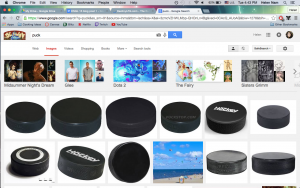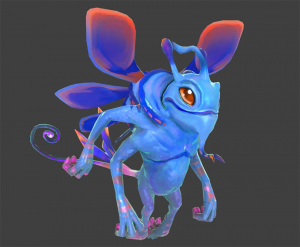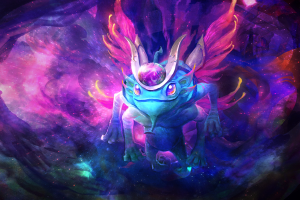Puck (a.k.a. Robin Goodfellow), one of Oberon’s fairy servants, is notable for being one of two characters who is involved in all of the different story arcs; he is responsible for meddling between the young Athenian lovers as well as transforming Bottom’s head in the Mechanicals plotline. His soliloquy at the end of the play is probably one of the most memorable moments as he breaks the fourth wall, directly imploring the audience to consider the idea that perhaps everything they have seen is, in fact, a dream. As a fairy sprite, Puck seems to embody this mischievous spirit: one fairy calls Puck “a shrewd and knavish sprite” (Act II.1.33) and Puck introduces himself as “that merry wanderer of the night. I jest to Oberon, and make him smile” (Act II.1.43-44).
Interested in the different depictions of Puck, I did a quick google image search of the term “Puck”.
I was immediately greeted with this:
After adjusting my search by adding the term “Midsummer Night’s Dream” I came across many images of Robin Goodfellow:
Most images feature a youthful, male Puck, while some even had children. His clothes are often leafy and green, probably to suggest his connection to the forest, and often times barely covered his body. Many of the men have full faces of makeup to accentuate that mischievous look—asymmetric, upturned eyes or eyebrows coupled with green coloring to emphasize his status as a forest sprite. Half of the men have horns attached to their head, to remind the audience that Puck is definitely not human (you know, in case the extravagant makeup and leafy green, scantily clad outfit weren’t already clues). Interestingly, Puck’s appearance seems almost canonical and obvious; most depictions of him follow the same theme, as if everyone naturally come to this image in their head that fairies wear green, leafy garb to blend in with their surroundings.
However, the thing that strikes me most is the eventual evolution of the name Puck as almost synonymous to any playful or mischievous spirit. When looking at my screenshot of my first search attempt at “Puck”, you will see that Google suggests first “Midsummer Night’s Dream,” then “Glee,” and another more mysterious term “Dota 2.” While I believe the Puck of Glee—a semi-amusing Fox musical-comedy show about an emerging glee club at a stereotypical high school—probably had nothing to do with our Midsummer Night’s Dream Puck (I think the nickname was just a shortened version of the character’s last name which was “Puckerman”), I would like to direct your attention to “Dota 2”.
Now, chances are, you’ve never heard of Dota, let alone understand why there exists a second iteration of it. Dota 2 is a very popular MOBA—Massive Online Battle Arena—game which pits two teams of five players against each other in what can only be described as a very complicated capture-the-flag game. It’s a computer game which stems from a modified version of another very popular game called World of Warcraft, an MMORPG—massive multiplayer online role playing game. Interestingly, both World of Warcraft and Dota 2 feature characters which draw inspiration from our own Midsummer Night’s Dream Puck.

A screenshot of Dota 2 gameplay
In World of Warcraft, Puck appears to be the inspiration behind the Puckish Sprite NPC—non-player character—evidenced by its appearance, location, and name (I mean, it is puck-ish). The Puckish Sprite can be found in the Jade Forest, a nod to the forest setting of A Midsummer Night’s Dream, and drops a myriad of loot. The thematic design of all the loot follows a forest motif; most of the loot is green and/or brown, and features twig and leaf designs. The Puckish Sprite’s main attack is simply named “Mischief.” Finally, the Puckish Sprite itself most resembles what we might think of as a forest sprite, and looks quite similar to the above screenshot of all the different male Pucks.
A Puckish Sprite from World of Warcraft
In Dota 2, Puck is one of the playable characters whose abilities specialize in appearing out of nowhere and leaving his enemies disoriented with a sprinkling of faerie dust. Sound familiar at all?
While Dota 2’s Puck, a faerie dragon, deviates from our more traditional view of Puck as simply a forest sprite, it is clear that it draws inspiration from A Midsummer Night’s Dream. Puck’s lore states that it is a “mischievous, childish character” with “an endless fondness of mischief.” Puck’s most powerful ability in Dota 2 is titled “Dream Coil” and its flavor text says “The faerie dragon sows confusion by forcing its enemies to vividly dream about their own mortality.” The purchasable cosmetic bundle for Puck is even named “Reminiscence of Dreams”.
Puck’s name seems to have almost morphed into a synonym for mischief, evidenced by physical depictions as well as the characterization of later, inspired figures found in other media. It’s fascinating to me that even in a video game, a media form quite far removed from theater, Shakespeare’s influence can still be profoundly felt.




